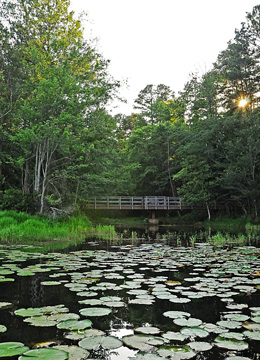Kicking Back Kicks in for Rural CountiesTexas state parks provide economic boost to local economies
Texas state parks offer the opportunity to kick back and enjoy nature. And while Texans are kicking back in state parks, the vacation dollars they spend kick in big for nearby local businesses and rural communities.

Photo courtesy of Texas Parks and Wildlife Department
About 10 million people visit Texas state parks each year, according to The Economic Contributions of Texas State Parks (PDF), a report released this February. Under the direction of John Crompton, a Recreation, Park and Tourism Sciences professor at Texas A&M University, this year’s report provides updated estimates based on a 2014 economic impact study. The latter included interviews with 13,647 visitors to 29 Texas state parks.
Commissioned by the Texas Parks and Wildlife Foundation (TPWF), the nonprofit funding partner of the Texas Parks and Wildlife Department (TPWD), both editions of the report build the case for the symbiotic relationship between money spent by state park visitors and a positive economic effect on nearby communities.
“A major role of state parks is to bring people to town,” Crompton says. “For rural areas, state parks attract people from outside the community, and of course that’s what has an economic impact. But parks are not merely places where people go for leisurely activities; in those [rural] communities, they are quite important economic engines.”
According to the most recent report, the 88 state parks managed by TPWD accounted for about $891 million in sales activities in 2018, with a $240 million economic impact on area residents’ incomes. That in turn supported about 6,800 jobs paying an average of $35,320 annually. In addition, the report notes that revenues from state parks have risen by nearly 40 percent in the last five years.
Crompton, who has spent almost 50 years working in the parks and tourism industries, emphasized the value state parks add to local economies. “State parks are a central part of the tourism mechanism,” he says. “In fact, if you aggregate parks, they are probably the No. 1 tourist attraction in Texas.”
That flow of tourism dollars into local coffers is especially meaningful for state parks and nearby communities in less populated areas.

Photo courtesy of Brian Frazier/Texas Parks and Wildlife Department
According to Crompton’s first report, Daingerfield State Park, located in northeast Texas in rural Morris County, attracted out-of-county visitors who spent an estimated $333,000 in 2014. This year’s report shows out-of-county park visitors spent about $609,000 in 2018, an 89 percent increase.
With the exception of state parks affected by Hurricane Harvey in 2017, similar increases occurred across the state between 2014 and 2018, including in West Texas’ Ward County, home to Monahans Sandhills State Park. Out-of-county visitors there spent about $350,000 in 2014 and $426,800 in 2018.
Teresa Burnett, executive director for the Monahans Chamber of Commerce, agrees with Crompton that parks are an important tourist draw for rural communities. She extols the history, scientific attractions and natural resources at Monahans Sandhills State Park, just six miles down the road from the 8,000 residents of Monahans, Texas. “We’re proud of our [state] park,” she says. “Any time you have anything like that, it helps your rural community.”
While state parks such as Monahans Sandhills and Daingerfield are tourist destinations, Crompton noted they are funded differently than other kinds of tourism. “If you were running any other kind of business, you would not separate the product — parks — from the promotion of that product,” he says. “But in Texas and most states, this is done because [tourism and state park] money come from two different pots. Tourism money comes from the bed [hotel] tax, and the state parks money comes from the sporting goods sales tax.”
In theory, TPWD has been eligible to receive up to 94 percent of receipts from sporting goods sales since 1993, with the Texas Historical Commission receiving the rest. In practice, TPWD received about 40 percent, or about $1 billion of $2.5 billion in receipts from sporting goods sales taxes between 1993 and 2014. The remaining 54 percent was diverted to state budget items unrelated to parks. The Texas Legislature did allot 100 percent of eligible receipts to TWPD in 2015 and nearly 90 percent in 2017.
Yet concern about the share of receipts consistently going to state parks prompted lawmakers to file joint resolutions this year in the Texas House and Senate. The resolutions add a constitutional amendment dedicating eligible sporting goods sales taxes to state parks. In April, both resolutions passed, sending the issue to voters this November.
“State parks have traditionally been positioned as amenities that cost a considerable amount of money to operate,” Crompton says. “In contrast, if you start talking about a tourist attraction, people aren’t immediately concerned about operating costs, but want to know how much money it brings into the community. For some reason, state parks have never been central to that equation, and should be.” FN
Interested in the economic impact of the recreation, parks and tourism industry on your community? Statewide reports from the Texas A&M Department of Recreation, Park and Tourism Sciences are available and free to download.

